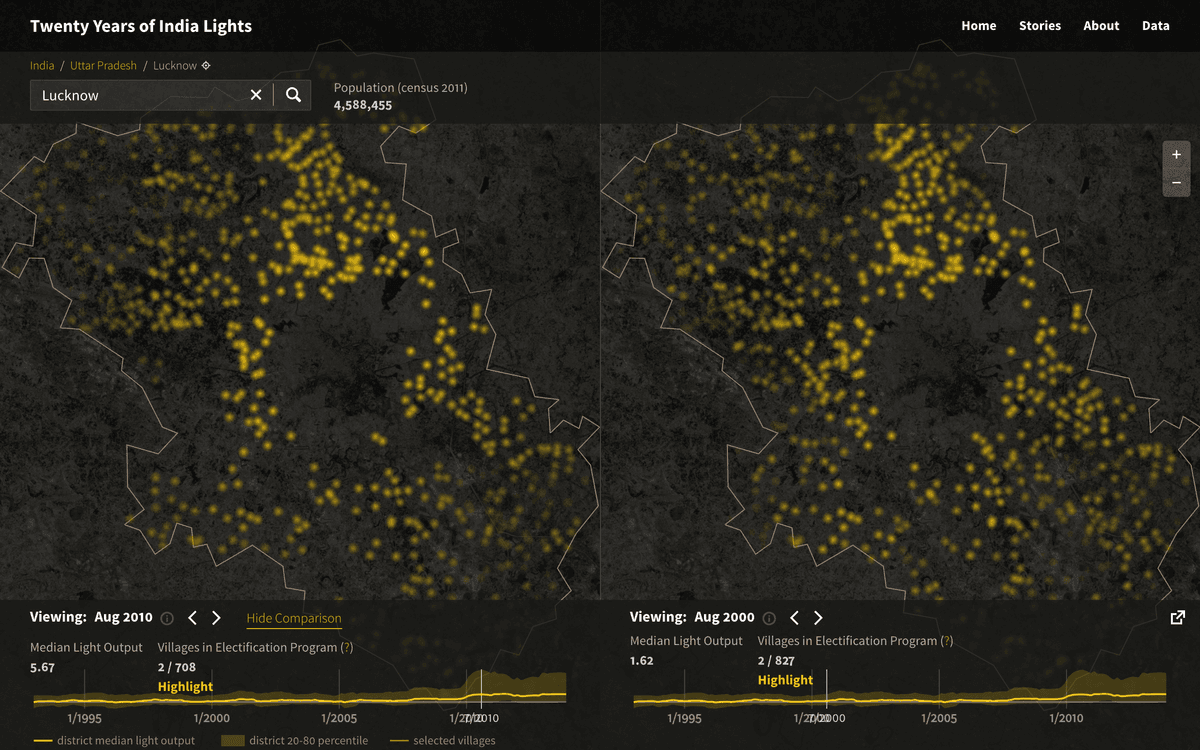Two weeks ago I visited Delhi with a team from the World Bank to launch India Lights, a tool that uses nighttime satellite imagery to track electrification in India’s rural villages. India Lights visualizes light output for over 600,000 villages, using nightly captures over a period of 20 years. Using freely available data, we aim to provide the tools to shine more light on the country’s electrification efforts.
Electrification is a top priority for the Indian government. In his Independence Day Speech a year ago, Prime Minister Narendra Modi committed to electrifying 18,452 villages within 1000 days. By the government’s own accounting, 7,696 villages have been connected in the past year. However, some report the actual number is lower, due to clerical errors, lack of followup, and poorly implemented electrification. Although the Ministry of Power tracks their efforts, their reliance on site visits and reports from affected villages makes monitoring their large territory understandably challenging.
On the other hand, to a satellite, remote villages are as accessible as urban centers. Using nearly 6 billion individual light readings from the National Oceanic and Atmospheric Administration’s (NOAA) weather satellites, we derive a unique light output curve for each of India’s states, districts, and 600,000 villages. This lets users track the light output of individual villages and how it changed, and see which villages participated in rural electrification projects and how they’re doing. All of this is possible without humans in the field.

Compare two different points in time at nightlights.io.
Though satellite cover a lot of ground, there are issues. Cloud cover, especially during the summer monsoon season, can wash out days or weeks of recordings, and small amounts of indoor light may not show up. Accordingly, a tool like nightlights works best when supplemented (and calibrated by) field-based methods, making for better, smarter monitoring. To learn more about the challenges we faced working with India Lights data, see our full post.
What’s next? We’re currently working to add data beyond 2013, and incorporate imagery from newer, more precise satellites. Also, we’ll be working with the Ministry of Power to see how they might incorporate daily nighttime images into their electrification monitoring system.
In the meantime, check out the new UI on India Lights, stay tuned for updates as we start pulling in more recent data, and check out the open API that powers the platform.
What we're doing.
Latest
